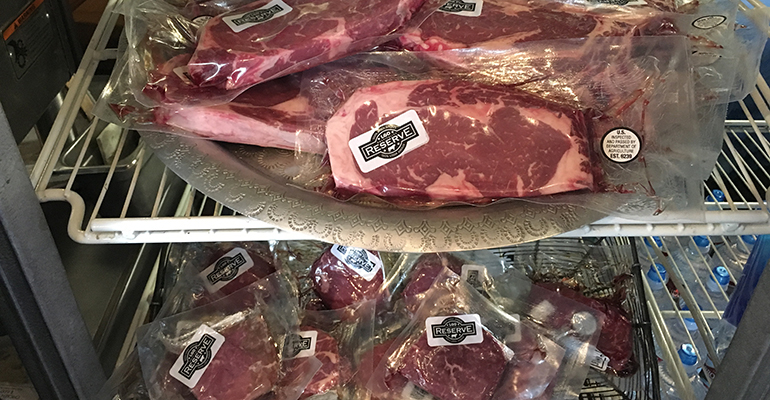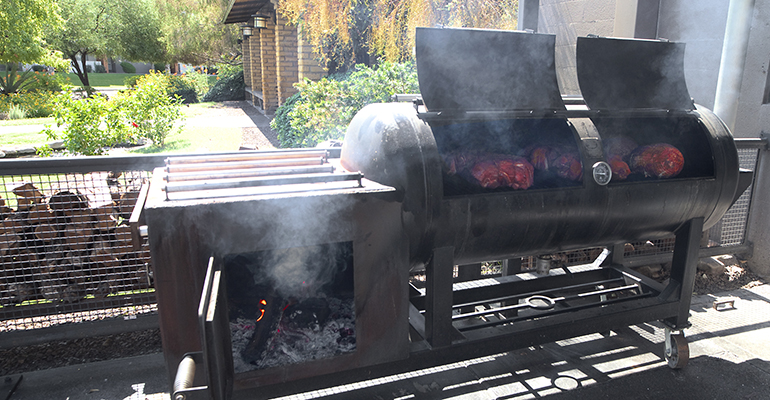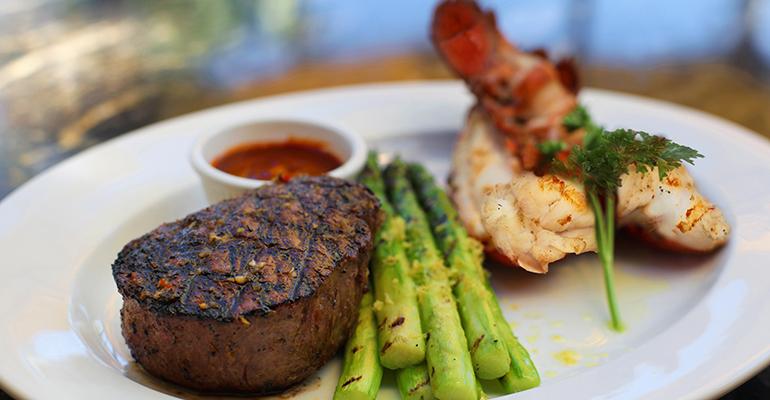As competition in the restaurant industry continues to grow, more restaurants are adding branded products to their menus — from beverages to condiments — in an effort to differentiate their offerings, build consumer trust and increase sales and traffic.
But some savvy operators are taking that strategy to the next level, differentiating by creating and marketing their own branded ingredients.
Last May, multiconcept group LGO Hospitality, which operates 11 concepts in California and Arizona, began serving at select restaurants its own “LGO Reserve Beef,” a USDA-certified Angus beef raised and produced to the company’s specific standards.

“We need to separate ourselves from everyone else,” said Adam Strecker, LGO Hospitality’s president and chief operating officer. “What other better way to get people to trust our beef than to put our name on it.”
LGO’s reserve beef comes from the upper two-thirds of Angus choice to prime Angus beef and the USDA has set 10 attributes in order for the product to be labeled LGO Reserve, including marbling, superior muscling and maturity.
Additionally, LGO went beyond the USDA’s grading to prioritizing the beef’s aging and sizing. The beef comes from Black Angus cattle raised in the Midwest, where LGO says only three in 10 cattle meet its criteria and standards.
To produce the reserve line, LGO partnered with Shamrock Foods, a Phoenix-based foodservice distributor that LGO has worked with since 2005. Shamrock worked with Gold Canyon Meat Company, which cuts, ages and processes meat to exact specifications at its USDA facilities in various U.S. locations, to customize LGO’s beef.
“[It’s] a great collaboration to develop a proprietary program,” said Ann Ocana, chief marketing officer of Shamrock Foods. “Finding premium solutions like this is what’s going to draw people back into the restaurants.”
The partnership with LGO is a first for Shamrock, but it been so successful that Ocana said the company would consider doing it again with the right partner.
Once the beef arrives at LGO’s restaurants, the culinary teams butcher it, cutting it down to the rib eye, strip loins and filets. The cuts are then aired out for at least 24 hours and then cooked over a wood-fired grill. The specialty beef is then used in dishes such as LGO Reserve Short Rib Tacos and Prime Rib of Beef at Chelsea’s Kitchen, and the dry-aged New York Strip and Ribeye Steak at Buck & Rider. LGO Reserve cuts are also available for purchase at La Grande Orange Grocery in Phoenix, which is also part of LGO Hospitality.

The concept of proprietary meat certification isn’t unique to LGO, but it is a newish approach that is growing in popularity.
The USDA first began certifying beef for meat retailers, groceries, restaurants and other companies in the early 1990s. Today, the USDA has about 125 different certified beef programs, each with their own standards.
“There’s been an increase in these requests in recent years,” said Darrell Dowd, assistant to the national supervisor, USDA Agricultural Marketing Service.[FG1] “[It’s] a marketing tool to facilitate marketing of a certain quality.”
Other operators interested in taking this branded beef approach will find that obtaining a certification is relatively quick and cost-effective. Dowd explained that once an application is submitted with the product specifications to be produced at an already USDA-certified meat-processing plant, a USDA official makes a site visit to confirm the standards reflect the government specifications.
The application then goes through various stages of approvals and is usually processed within about 10 business days. There is no cost to operators for this certification, though Dowd said the processing plants might have costs associated with becoming a USDA-certified facility.
Premium branded beef can have a more-premium price. At LGO Café in Pasadena, Calif., for example, LGO Reserve steaks are priced at $37 for a Mesquite-grilled cowboy ribeye, and $38 for a filet mignon.
“We are extremely conscious of value,” said Zack Walters, executive chef of LGO Café, The Otis Bar and The Luggage Room in Pasadena, which are operated by LGO Hospitality. “Our steaks are comparably priced. We try not to be overly pretentious about what we are selling.”
So far, the branded beef has been selling well, said Walters.
To articulate the quality of the product to diners, Walters relies on menu verbiage and servers are trained to talk about the program.
“It’s good for the diner because the consistency always should be the same as they had it last time because of the way we’re grading the product,” said Walters. “From a food standpoint it puts the attention that we’re really paying attention to the product were bringing in, not cutting corners.”
Strecker believes LGO’s branded beef strategy, and its overarching commitment to the freshest and highest quality products will ensure that the company and its concepts stand the test of time, despite increasing competition.
“We want to be around forever. It’s not about making a quick dollar. We want to be a legacy company,” said Strecker.
What makes it LGO Reserve?
LGO Reserve follows the USDA’s G Schedule’s 15 requirements for its beef. It requires attributes for U.S. Prime and U.S. Choice Angus Beef, such as fat thickness being less than one square inch. LGO Angus Beef always comes from the same source. Only 3 in 10 Angus Cattle meet the LGO criteria. The beef must meet these 10 attributes:
1. Yield Grade of 3 or better (fat to lean)
2. Fine to medium texture in the marbling
3. Modest or higher marbling
4. A Maturity (9 to 30 months)
5. No neck hangs exceeding 2”/51% black hide
6. No dark cutters
7. Free of capillary rupture
8. Superior beef muscling
9. Carcass weight 1,050 lbs. or less
10. 10-16 square inch in the ribeye area (consistent sizing)
In addition, each of our LGO Reserve cuts has an aging requirement:
· Tenderloin: 18-24 days
· Ribeye: 28-35 days
· Striploin: 28-35 days
· Dry Aged Striploin: 21 days wet and 21 days dry





